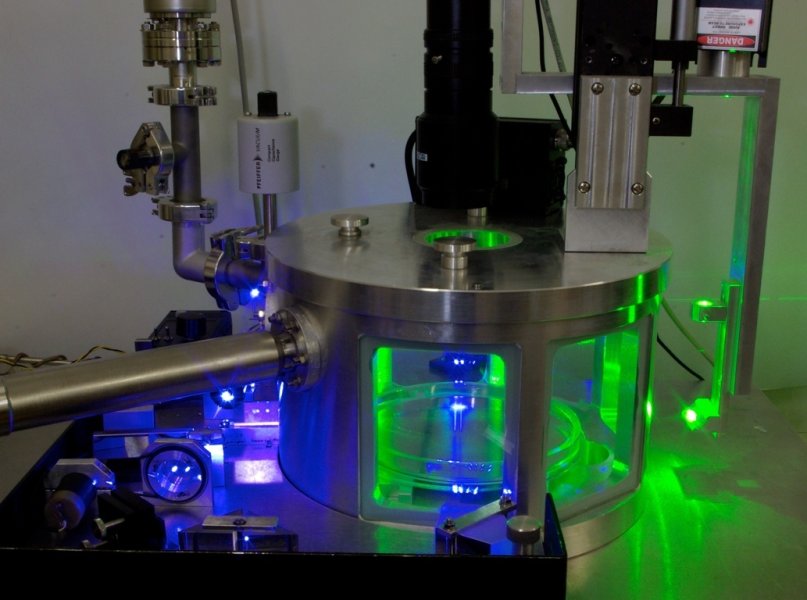Complex plasmas
Contact: Péter HARTMANN
Laboratory complex (dusty) plasmas can be created by dispersing micron-sized particles into gas discharges. The (typically noble gas) glow discharge can be direct current (d.c.) or radio frequency (r.f.) driven and serves primarily as a charging medium for the (typically spherical, dielectric) particles. The dust particles are exposed to electron and ion currents from the discharge plasma, a dynamic equilibrium is rapidly reached, where their net electric charge can be in the order of 10^4 electron charges. The interaction of these particles with their environment can be manifold: gravitation, Lorenz force, ion drag force, neutral drag force, thermophoretic effects, etc. The dominance of the different force contributions can be tuned by adjusting the experimental conditions (microgravity, flowing gas, etc.). In the case when the particles are levitated in a horizontal plane-parallel electrode configuration r.f. discharge, the gravity is compensated by the vertical electric field of the plasma sheath, and the particles settle in a single quasi-2D layer near the lower electrode. Other effects, like ion- and neutral drag forces act also mainly perpendicular to the particle plane, therefore they influence only the equilibrium position of this layer. The remaining in-plane forces can be well approximated by a simple Yukawa type interaction, originating from the Coulomb repulsion of the charged dust particles and the polarizability (screening property) of the surrounding discharge plasma.

Complex (dusty) plasma experiment in our Laboratory.



